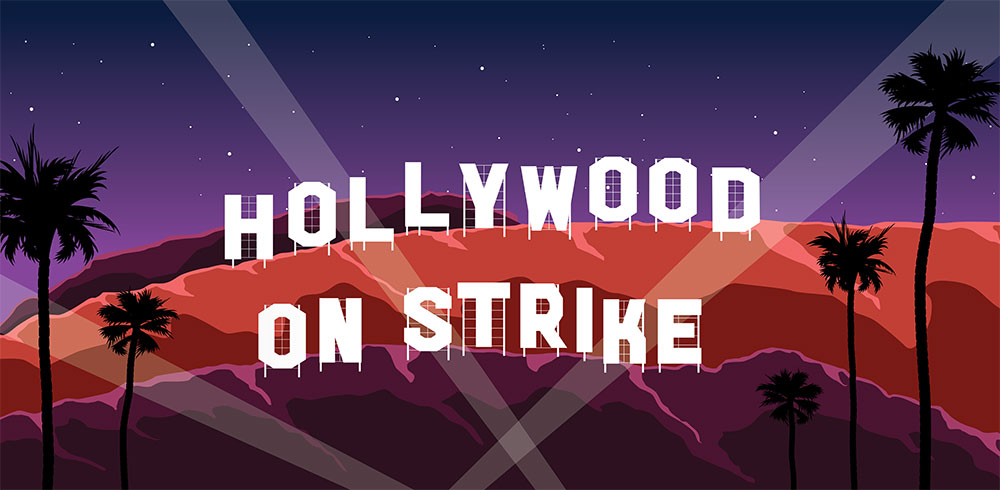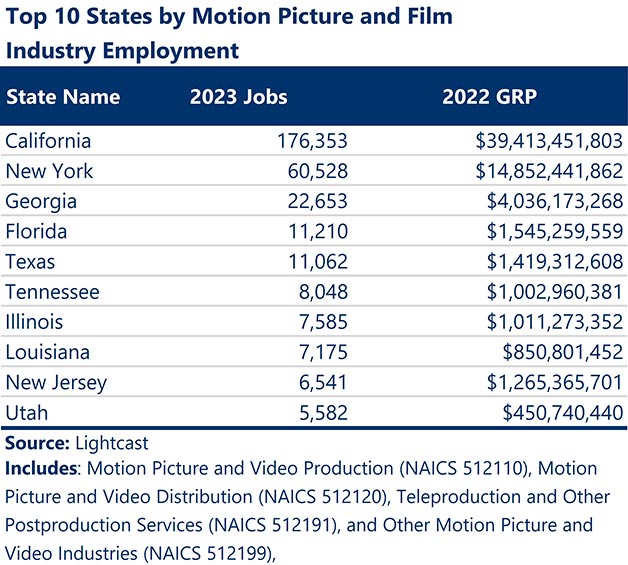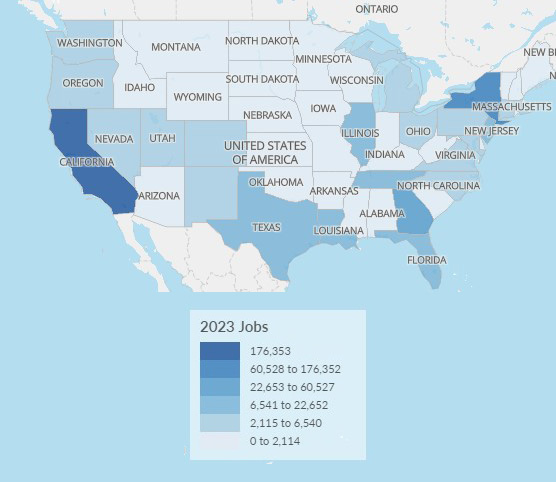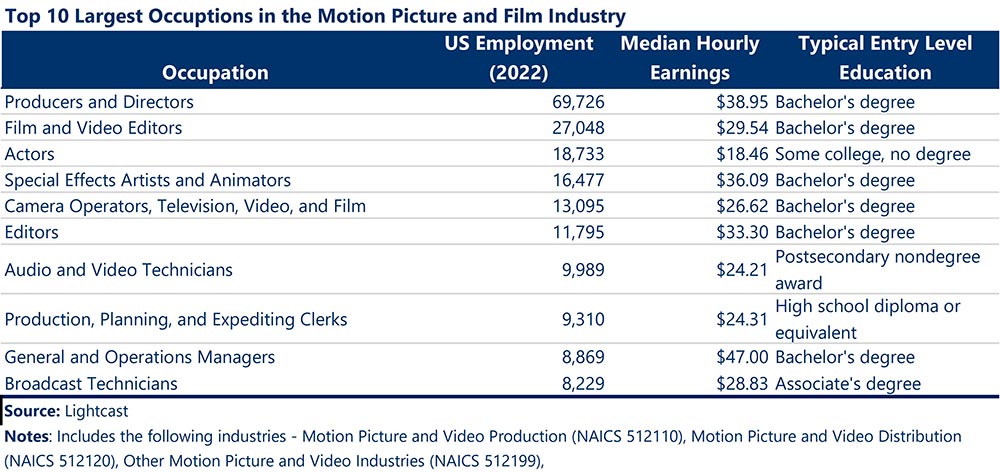- Navigator
- Arts, Entertainment, Recreation, and Events
- Economic and Fiscal Impact Analysis
 As economic development professionals, we most frequently examine the positive impacts of a project or industry investment as part of our economic and fiscal impact analysis work. But it can also be valuable to consider the negative impacts of the loss of an industry or major employer. When an industry shuts down, how might supply chains be impacted? What tax revenue will be lost? What indirect and induced impacts will be felt?
As economic development professionals, we most frequently examine the positive impacts of a project or industry investment as part of our economic and fiscal impact analysis work. But it can also be valuable to consider the negative impacts of the loss of an industry or major employer. When an industry shuts down, how might supply chains be impacted? What tax revenue will be lost? What indirect and induced impacts will be felt?
With the recent Hollywood writers and actors strikes here in the US, these impacts are being experienced firsthand. As of the writing of this article, writers represented by the Writer’s Guild of America (WGA) have gone back to work after being on strike for 146 days and the actors, represented by SAG-AFTRA, reached an agreement after 118 days on strike.
The writers and actors strikes are currently estimated to have had an economic impact of more than $5 billion across the United States because of halted production, diminished spending, and staffing cuts. The bulk of the impact will be felt in states with large production industries like California, which is expected to lose approximately $3 billion, and New York, which is reporting a loss of $1.3 billion as a result of the strikes.
These losses come from a wide variety of sectors touched by film and television production. Productions bring in hundreds of people per day to communities who make personal and professional purchases at various local businesses, including caterers/restaurants, lodging, designers, and more.
Camoin Associates has worked on several projects that have measured the economic and fiscal impact of film and television production on local and statewide economies and we understand the indirect and induced impacts that are generated.
We recently started work on a second impact analysis for Westchester County, NY, that will quantify the impact of the television and film industry on the county’s economy. Our analysts are expecting to see a significant drop in overall filming, spending, and jobs associated with the sector in the second half of 2023 as a result of the strikes compared to the previous analysis we completed for the county.
Industry Data

Film Industry Occupations
Within the Motion Picture and Television Distribution and Production industry, the largest occupation is Producers and Directors, accounting for more than 20% of the industry’s total jobs in 2022.
Most of the top occupations within this sector require at least a bachelor’s degree, but limited work experience is required to enter the field. The full impact of the actors strike on the industry’s employment is not yet known, but it is expected that the majority of those who were on strike will return to work now that the strike is over.
Film industry job multiplier
As an industry group, the jobs multiplier for the US Motion Picture and Video industry is high. For every one job created in the industry, over eight more jobs are created around the country in supporting industries (Source: Lightcast). This is why 11,000 WGA writers and 150,000 SAG-AFTRA actors going on strike have created such a large ripple impact across the country as other connected sectors are impacted by the halted work, resulting in billions in losses.
Role of Economic Developers
While we don’t want to see them getting up on stage anytime soon, there are several supporting roles economic developers can play (pun intended) in mitigating the impacts of a strike or major employer loss. This includes leveraging their expertise in mediation, data analysis, and economic planning to mitigate the short-term impacts and promote long-term economic resilience and stability.
- Mediation and Conflict Resolution: Act as a neutral third party to facilitate negotiations between striking workers and employers, helping both parties reach a mutually acceptable agreement.
- Labor Market Analysis: Provide data and analysis on the local labor market conditions, including the potential economic impacts of a strike. This information can be valuable for both labor unions and employers to make informed decisions during negotiations.
- Economic Impact Assessment: Conduct assessments to quantify the economic impact of a strike on the local or regional economy. This data can be used by policymakers, community leaders, and businesses to develop strategies for mitigating negative effects and planning for recovery.
- Employment and Training Programs: Work with local workforce development agencies to create or expand employment and training programs. These programs can help affected workers acquire new skills and find alternative employment opportunities.
- Community Support Services: Collaborate with local social service agencies to provide support services to striking workers and their families, such as access to food, housing, and healthcare resources.
- Advocacy for Labor Rights: Advocate for fair labor practices and workers’ rights. Support policies and initiatives that promote healthy labor-management relations and fair compensation.
- Promotion of Economic Diversification: Work on diversifying the local economy to reduce vulnerability during times of upheaval through economic development strategies, entrepreneurship support, and employer retention services.
- Long-Term Economic Planning: Engage in long-term planning to enhance a region’s economic resilience, ensuring that it can weather economic shocks like labor strikes more effectively in the future.
If you are interested in measuring the impact of the television and film industry on your community, or any other important industry in your region, please reach out to me at rachel@camoinassociates.com or 518-899-2608, Ext. 107.






